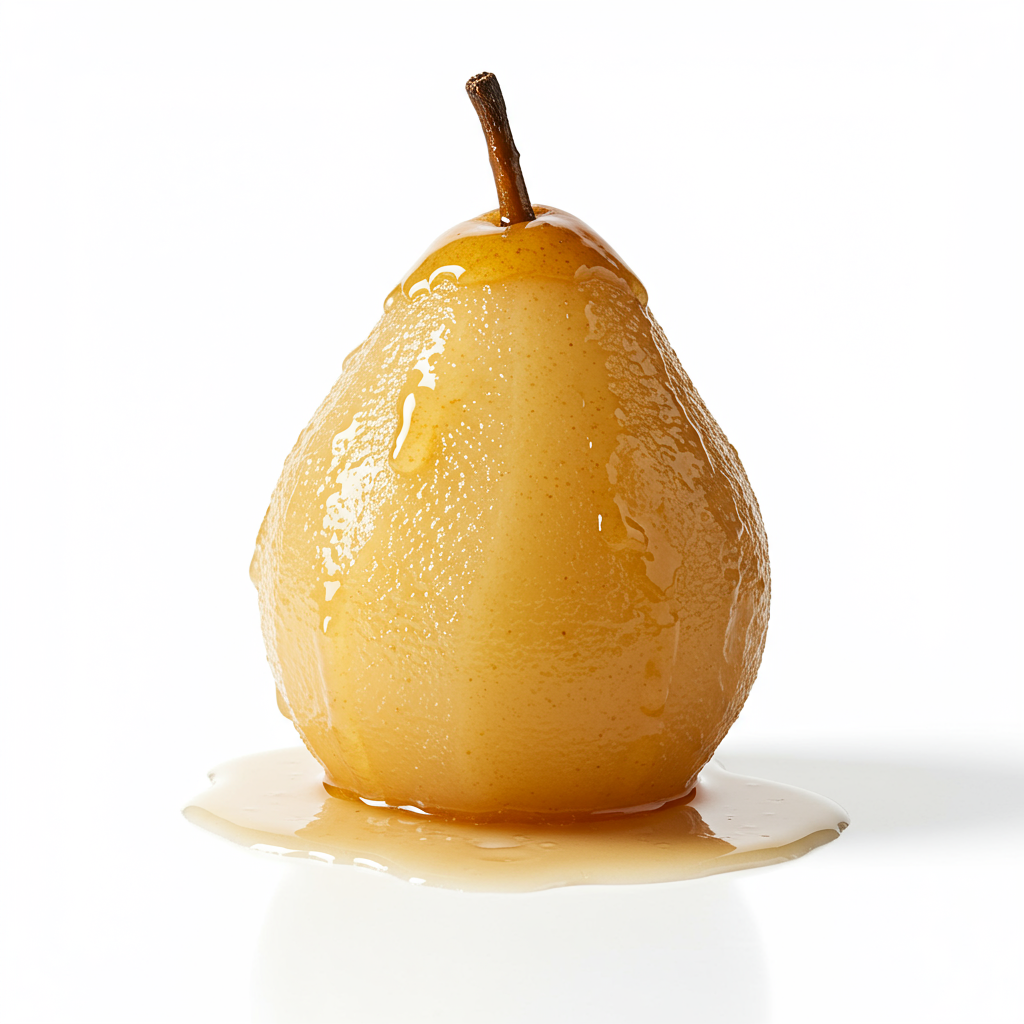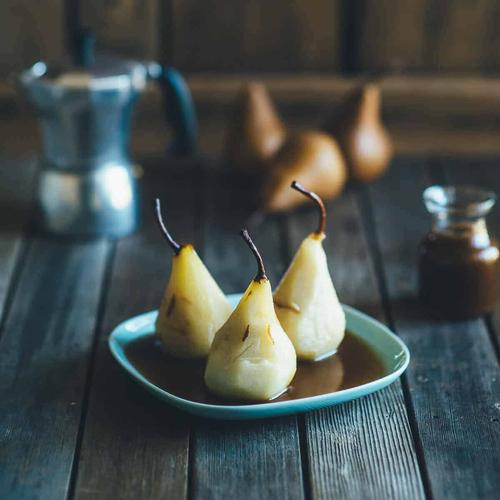Poached Pear
Poached Pears are a heavenly dessert that are not only delectable but are also quite simple to prepare. These are pear fruits that have been gently simmered in a syrup made typically of wine, sugar, and various spices until tender. The fruit soaks up the flavors of the syrup, resulting in a wonderfully fragrant and flavorful treat.
Versatile and elegant, they can be served on their own, with a dollop of whipped cream, a scoop of ice cream or as a fancy accompaniment to a cheese board. Poached pears are sure to be a hit at your next dinner party or any festive occasion you plan to celebrate.
97%
CARBS
1%
FAT
2%
PROTEIN
1 Recipe for Poached Pear
Poached Pear FAQ
Cooking poached pears may seem intimidating at first because of the apparent delicacy of the process, but it is actually quite straightforward and manageable. The most common mistakes people make when poaching pears are choosing the wrong type of pear, cutting the pear improperly, and either overcooking or undercooking the pear.
To get the most out of your poached pear dish, choose pears that are slightly under-ripe and firm, as they will hold up better in the poaching process. Bosc or Anjou pears are often recommended. Second, don’t peel the pears completely, leave the stem intact and scoop out the bottom to remove the core which results in a more appealing presentation and makes them easier to handle.
A truly underestimated hack to the flavor of your poached pears is the type of wine you cook them in. Different wines can lend different aroma and flavor profiles to your fruit. For a simple dish, a sweet white wine is a good option. But a more complex flavor can be enjoyed when using spiced wines.
Lastly, it’s important to ensure the poaching liquid covers the pears completely, this way it ensures even cooking. You can achieve this by using a piece of parchment paper with a small hole cut out in the middle on top of the pears to keep them submerged.
Here are some commonly asked questions about poached pears to help you on your culinary journey.
What type of pear should I use for making poached pears?
Do I need to peel the pears before poaching?
What type of wine should I use for poaching pears?
How can I make sure my pears stay submerged in the poaching liquid?
How do I know when the pears are done?
Do I have to cook the poaching liquid before adding the pears?
Can I reuse the poaching liquid?
Can I add spices to the poaching liquid?
Can I serve poached pears warm or do they need to be chilled?
What should I serve with poached pears?
Health Info
Macros
31g
CARBS
0g
FAT
0g
PROTEIN
Allowed on these diets
HIGH CALCIUM
VEGETARIAN
GLUTEN FREE
Contains these allergens
MILK






